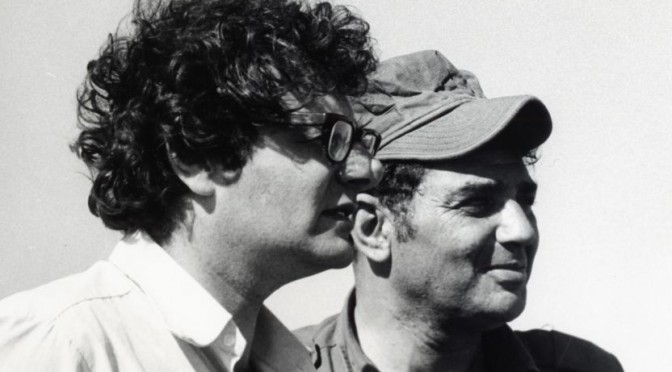7.50 am. We drive past Megiddo – ancient Armageddon – along the road General Allenby took in the final expulsion of the Turks from Palestine. ….
9 am. Reach Ginossar, a small settlement on the Sea of Galilee. In the guest house lobby all journalists are being briefed by an Israeli officer. Two weeks ago, in civilian life, he was an accountant. Now he is Major, recalled to service. He gives me a word of warning. “It is hell up there. There is no need for you to commit suicide. I will send you to a quiet part of the line, where there is no shelling.” He shows me on the map where the line is. … We are about to leave. The Major takes me aside and says: “As you are not the latest kamikaze squad, drive first northward from Harfa. Like Napoleon and Marlborough, from there you can look down on the whole battle front – the ugly, brown, great graveyard. These are not the green fields of Waterloo.” ….
10 am. We reach Rosh Pina checkpoint, and turn northwards along the road to Kuneitra and Damascus. The roadsign says thirty-five kilometres to Kuneitra. The captain offers to drive, so that I can take my notes more easily without threatening to run the car into a ditch every time I put something down. ….
10.15 am. We cross the Daughters of Jacob bridge, into the Golan. The Jordan is only a stream. On either side of the road the heights are still mined with the Syrian mines of 1967. The captain comments: “For some reason or other we did not have time to clear the mines.” We pass Syrian fortified positions, right on the old border, and looking straight into the eye of the agricultural settlements which they used to shell – the Huleh swamp, which Israel has drained, and turned into a paradise of fruits and vegetables. Since 1967 they could at least go about their daily business without armour plating on their tractors, sleeping in underground shelters, and sending their children from home to school through deep fortified trenches, zigzagging though the settlements. “The Six-Day War ended that terrible price for existence,” the captain says. “At least since 1967, since we hold the Golan heights and pushed the Syria guns fifteen miles away, our children could walk upright along proper paths, and did not have to sleep underground. That is why we regard the possession of the Golan heights as essential to preserve a civilian way of life. If the Syrians had cared to turn their guns into tractors and the Golan heights into an agricultural paradise, there would simply have been no reason for us to take anything east of the Jordan river.” ….
10.22 am. We reach the point on the road reached by Syrian tanks at the outbreak of this war. It is less than ten minutes slow winding drive from the Jordan river. From this point the whole of the upper Jordan valley and the Huleh irrigation system is visible. There is a building still intact among some trees. It is the Syrian customs house of the 1923 border, a border agreed upon by Britain (which then controlled Palestine) and France (which then controlled Syria). In 1947 it remained in Syrian hands. In 1967 it was captured by the Israelis. Now, but only briefly, it had become Syrian again. “There is no doubt, however,” the captain comments, “that the Syrians did not even have time to get out of their tanks and brew themselves some coffee in it, before they were driven back.” ….
10.39 am. We pass another Syrian village, one which had virtually been destroyed in 1967. At the roadside are several burnt out Israeli tanks, destroyed while defending this road on 6 October. They are smashed and blackened. I feel sick at the thought of what must have happened to the boys inside them when they were hit. The captain says: “It is hard to believe that this was a tank, this mass of steel; that it is also the instrument our safety turned upon. But these are the few – the very few who stopped the Syrians from overwhelming the northern Galilee.” ….
To receive Book Club discounts and read Sir Martin’s personal reflections and news: Subscribe to Sir Martin’s Newsletter & Book Club
Follow and share Sir Martin on Twitter @ SirMartin36 and Facebook Sir Martin Gilbert

